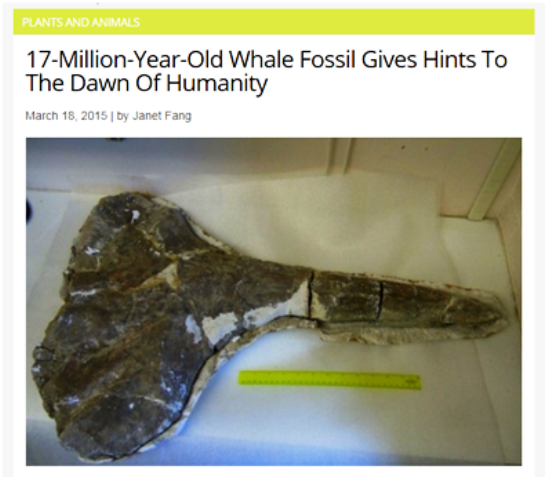17 million Year Old Fossil Explains African Uplift

Credit to http://www.iflscience.com/ for the picture. The fossil is now being run through multiple tests to reveal more details about exactly what might have happened with the tectonic plates.
April 3, 2015
If anyone has taken the biology course at North Forsyth High School, then they would have learned about the Geologic Time Scale, index fossils, and how scientists date fossils or rocks: Radiometric or Relative dating. Radiometric dating is more accurate and scientists prefer to date ancient objects. They use the natural decay rate of isotopes to calculate the age of the material and then they are able to place it in its correct period of time in the Geologic Time scale. Recently, a 17-million-year-old whale fossil provides the first exact date for East Africa’s puzzling tectonic uplift. When the fossil was originally discovered, it soon vanished from records years later from the National Museums of Kenya but resurfaced decades later in 2011 at the University of Harvard.
Scientist have now studied the fossil and where it was found to come up with a very strong hypothesis that the whale was a Ziphiida, which is classified as a Beaked. They are deep divers in the ocean, but the fossil was found about 460 miles inland of the present-day East African coast. The whale may have lived in the Indian Ocean and mistakenly ventured into a river that would lead it to the modern day Kenya. Scientist and paleontologist say that the whale died in a river-lake environment. They came to that conclusion, because they discovered the fossil in lake-like sediments mixed with some river sediments.



